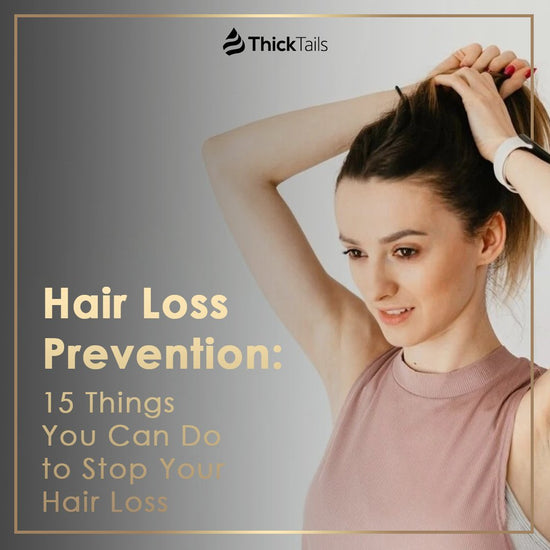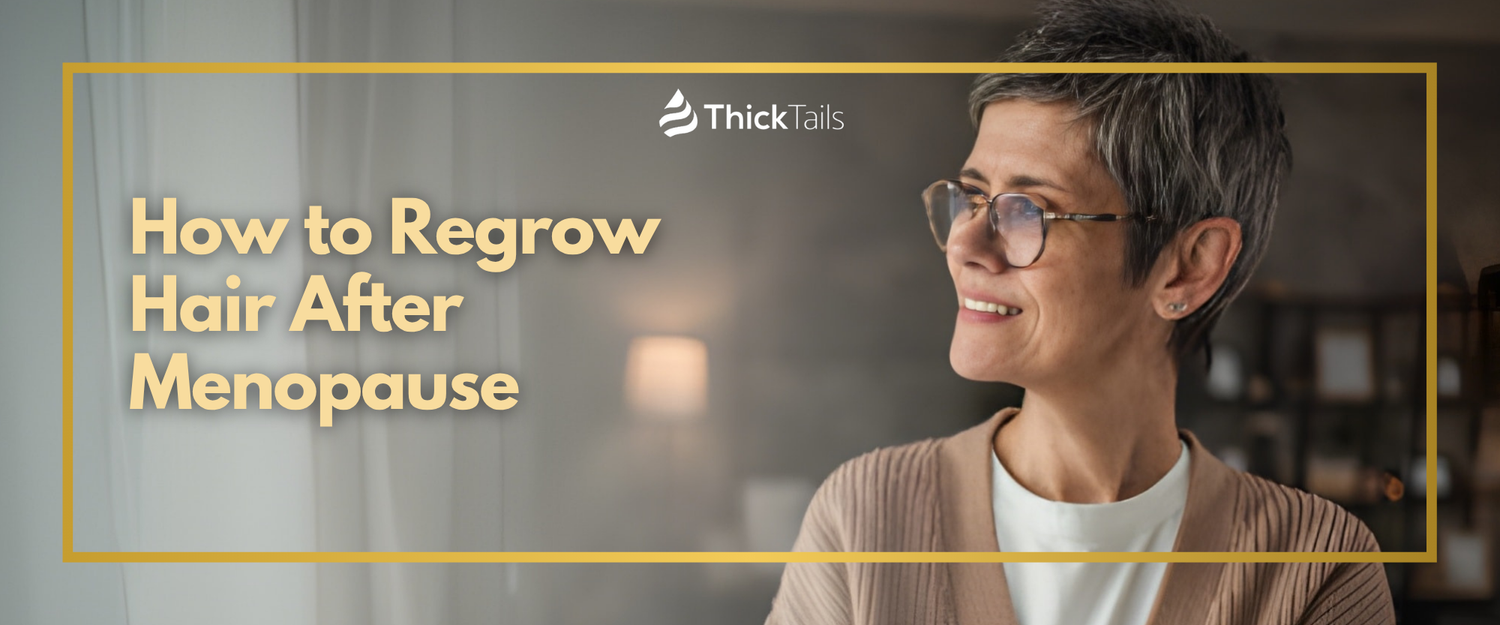Are you worried by the scattered hair strands on the floor? Seeing your hair strands everywhere can be quite alarming. A human sheds 50-250 strands of hair in a day, but going beyond those numbers can be a sign of a severe case.
If you're wondering why your strands are falling, you need to check if you're experiencing female hair loss.
1. Androgenic Alopecia
Losing strands of your mane is a healthy physical change in your body. Hair thrives and dies at specific points in your life. However, you must also take hair loss seriously before it gets too late.
Androgenic alopecia is gender-neutral. This hair loss condition is common for both men and women. However, female alopecia is a big no-no for women. For them, the hair is their crowning glory.
What's worse is that androgenic alopecia is a hereditary hair disorder, so it's unlikely to evade experiencing this condition if hair loss is inherited within your bloodline.
Androgenic alopecia occurs when there is an increase of androgens in your body, hence proliferating DHT production in the body. Increased DHT levels mean a red alert for your hair follicles since DHT is known to shrink your follicles and impede their development.
Many women experience female pattern hair loss after menopause due to the decline of female hormones, giving a chance for androgens to take over your system.
Female pattern loss usually begins with a slow growth phase. The hairline also starts to recede. Though total baldness is rare for women, severe cases can cause thinning and losing hair all over the scalp.
2. Traction alopecia
If you're fond of tightening your ponytail or braids, you must be aware of traction alopecia. This hair loss problem happens due to the extreme tugging of your hair strands.
Hairline recession is an evident sign of this condition— your scalp experiences bump-like inflammations. Extreme pulling of your hair can cause small patches to appear, which may lead to scarring.
There are several factors causing traction alopecia. Tightened wearing of headgears and accessories, using hair extensions, constricted hairstyling, and applying harsh relaxers can trigger hair loss.
If diagnosed and treated early, then hair grows back after a few months. How can you cure traction alopecia? Applying antibacterial ointments is one option to avoid scalp infections. You can also take hair supplements rich in biotin and Vitamin C to hasten new hair growth.
3. Alopecia Areata
Hair loss can also be hereditary, just like alopecia areata. People who experience this condition before 30 have at least one family member who has suffered from alopecia areata. Alopecia areata is an autoimmune disease. It happens when your body mistakenly attacks your cells underneath your follicles, thereby causing hair loss. This hair problem appears as small spots on your scalp, which lasts for about a year. However, if left untreated, alopecia areata can become severe and cause total baldness. What are the signs of alopecia areata? You may begin to notice smooth round patches on your scalp. In some cases, they can be soft and itchy. In rare cases, total scalp baldness may occur, affecting other parts of your body covered with hair.
Alopecia areata is not a hopeless case. There are various treatments made available for hair loss patients. You can opt to have steroid injections to reduce inflammations. Steroids can also inhibit your immune system from attacking your hair cells. You can also try micro-needling, a method in which tiny needles are pricked into the affected portion of the scalp. This pricking method promotes new collagen production, which is vital to hair growth.

4. Folliculitis Decalvans
Women after childbirth may experience postpartum changes, including hair loss. However, long-term hair loss can be a sign of folliculitis decalvans. Hair follicle damage is something you don't want even to happen. When you have folliculitis decalvans, small fluid-filled bumps around your follicles begin to swell. The swelling later on envelopes your hair follicles, and severely impair them. When you have FD, bacteria get trapped within your infected follicles and cause soreness. Once inflammation occurs, your pate begins to itch, and its redness becomes evident. What's worse is that the pus pops out of your scalp. Medications can reduce the adverse effects of folliculitis decalvans. You can ingest antibiotic tablets like minocycline to revive your dying hair follicles.
5. Telogen Effluvium
A disturbance in the hair growth cycle can trigger a temporary hair loss known as telogen effluvium. Your hair follicles in the anagen phase begin to slow down, causing most strands to undergo catagen then into the telogen phase. This shift means that your hair goes into the resting phase too soon. There is a rapid upsurge in hair thinning and shedding among telogen effluvium patients. There are many causes behind this temporary hair loss. Stress, surgery, physical trauma, and loss in weight can trigger this condition. Shoo your worries away because new hair grows back after some time. However, there is an immediate need for treatment to prevent further hair casualties.
6. Anagen Effluvium
Contrary to telogen effluvium, anagen effluvium happens when an extreme hair shedding occurs during the anagen or the growth phase. This hair loss condition happens when your hair follicles get injured internally or externally during the growth period. Anagen effluvium begins when your hair cells fail to divide and multiply, thereby thinning your hair and exposing it to damage. Any person undergoing chemotherapy is prone to this specific hair loss condition. Radiation destroys even the healthy cells, thus inhibit follicles from thriving during the growth stage. Anagen effluvium can also be caused by scalp infections and high toxin levels in the body.
7. Cicatricial Alopecia
Hair loss is deeply linked to hair follicle damage. Cicatricial alopecia is a hair loss condition caused by scar tissue in your scalp. The scarring prevents new hair from growing.
What causes cicatricial alopecia? It begins with the inflammation of the upper part of the hair follicle. The swelling can expand and destroy your follicles, leading to scarring of tissue. The formed scars then inhibit strands from growing.

How to Treat Female Hair Loss
Female alopecia can be conquered. Here are some helpful tips to win against female hair loss.
Tip #1: Feed your body with nutrient-loaded foods.
Hair growth best works with the help of vitamins and minerals. Your hair shaft needs enough nutrients to keep on thriving.
What foods should you include in your everyday diet? Don't forget to fill your stomach with biotin-rich foods like eggs, meat, nuts, and sweet potatoes. Include a sufficient amount of protein in every meal.
Tip # 2: Use minoxidil against hair loss.
Minoxidil is an FDA-approved drug to stimulate hair growth. This FHL treatment comes in tablets or topical ointments.
How can this drug treat female alopecia? No, it doesn't. However, minoxidil is used to extend your hair's growth phase. With the help of this drug, hair follicles are prompted to undergo the telogen phase to re-enter the anagen stage as soon as possible.
Hair shedding is a normal reaction for first-time users of minoxidil since your hair is forced to go through catagen and telogen phases. But don't worry, because new strands are about to grow.
Tip # 3: Try hormone therapy.
Childbirth and menopause are typical causes of hormonal imbalance in a woman's body. Estrogen and progesterone levels decrease, which inhibits healthy hair growth.
An irregularity of your hormones can trigger hair loss. Therefore, supplying yourself with synthetic hormones may help deregulate your hormonal levels.
Tip #4: Enrich yourself with iron.
Blood keeps your hair follicles alive and kicking. Your strands need oxygen and other essential nutrients for survival, and a deficiency of such sustenance prevents hair cells from growing and repairing.
If your body lacks iron, you need to supply yourself with iron-rich foods like spinach, beans, lean beef, tuna, and mackerel. You can also take iron supplements for nourishment. But don't consume excess iron if unnecessary, to avoid experiencing side effects.
Tip #5: Ingest anti-androgens.
Some female hair loss patients may be unresponsive to minoxidil. An alternative way to defeat hair loss is by taking anti-androgens. Androgens are infamous for "killing" hair follicles. Therefore, a healthy dose of anti-androgen drugs reduces androgen production in the body. They also prevent the enzyme 5-alpha reductase from producing DHT.
Tip #6: Undergo hair transplant.
Though this procedure may sound expensive, hair transplant is another effective procedure against hair loss.
What happens during a hair transplant? It begins with getting a scalp donor. The scalp is then divided into smaller pieces to be used as grafts. Next, the grafts are implanted into the patient's scalp.
Tip #7: Avoid hair loss-causing procedures.
Refrain from worsening your hair problem. First, do not expose yourself to radioactive therapies. Second, halt all unhealthy hair grooming habits. Third, cease harmful hairstyling treatments. Remember that your lifestyle reshapes your mane in many ways.
WHAT'S NEXT?
Female hair loss can hit anyone at any time. Thus, you need to do your best to avoid losing your precious locks. Also, consult a dermatologist to provide you with the most effective hair loss treatment.
KNOW MORE
Learn more about female alopecia. Discover the best hair growth products for thinning hair and hair loss.










